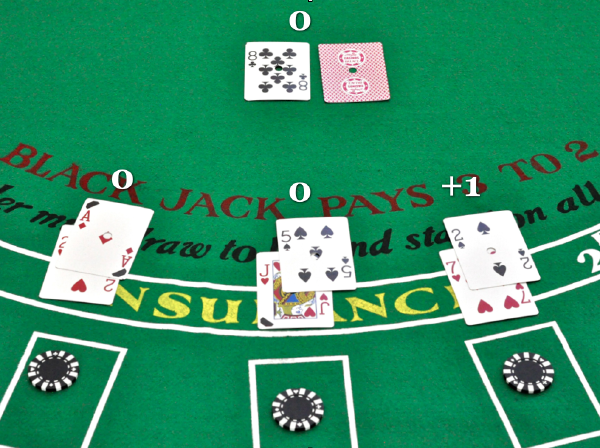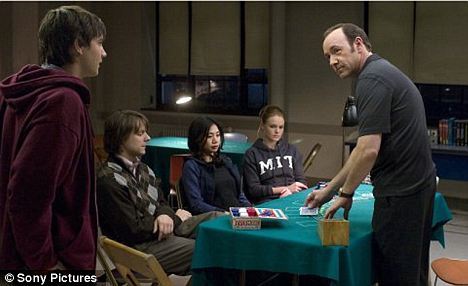How Do Casinos Catch Card Counters
Surveillance maintains the lists of individuals that have been banned for counting cards. They also operate and observe the facial recognition software that is now used by many casinos. When a suspected card counter arrives at the casino, facial recognition can alert surveillance to their presence. Casinos’ efforts to catch card counters have gone high-tech in recent years. Case in point, they now put RFID chips in cards. Bloodhound and Protec 21 software, for example, uses these chips in cards to try and determine a player’s edge. RFID tech is also being put in chips to track wager sizes.
Card counting is a fascinating Blackjack strategy. In 60s-70s, after Edward Thorp published “Beat the Dealer, the first card counting guide, it was an underground thing, but it has spread over mainstream social currents and acquired a fair amount of fame thanks to Hollywood movies and popular books on the subject. In real life, there’s not as much drama about it, and even though card counters are considered rather skillful, they can easily get caught, especially if the casino venue has experienced staff and proper technology. But let’s look into this matter with closer attention – how do casinos manage to spot and remove card counters who, even though they aren’t doing anything illegal, are insulting the casino business with their skills?
There have been claims that casinos sometimes accuse players randomly of counting cards, or just because they’ve noticed a player placing an unusual bet. But this is far from the truth. A single unexpected bet won’t bring suspicion to your position at a blackjack table, but closely observing your betting patterns and your overall demeanor will.
Casinos Are Prepared
There isn’t an average casino venue without security surveillance, not to mention large casino chains and highly respectable gambling centers. Cameras are everywhere. But surveillance isn’t all there is to it if one doesn’t know where to look. This is why casinos take necessary precautions and even go as far as to employ former card counters to act like supervisors and report any suspicious actions. They are out of reach for players, sitting in security booths and monitoring the play through the cameras. Being familiar with the technique, a former counter will catch a colleague sooner or later.
Casino’s reaction will be mild at first. Chances are more drinks will be sent at the suspected counter’s table, or a dealer will strike a conversation with the alleged counter in order to break his/her concentration. If the counter fails to get the hint and continues to act strangely, the next step would be asking the person to leave the blackjack table, leave the casino floor or leave the premises altogether. Depending on how strict the casino is, a counter could be banned from the venue permanently.
Another convenient method casinos use is face recognition software. This particular piece of software is quite advanced, and thanks to the database made out of different casinos’ contributions (something of a blacklist) the software can point out to individuals labeled as card-counting offenders.
In case the casino is not as well-equipped, making the dealer shuffle more frequently is an effective method to make the counter loose track. But if the counter keeps trying to impose his/hers controversial intentions, he will be penned as a counter and become persona non grata.

There’s more to Card Counting than Just Card Counting
Learning basic mathematic principles of card counting is one thing, but managing to blend in while applying it is totally another set of skills. And the thing is – a good card counter has to coordinate both of them to become successful.
Counters are mostly caught because they show signs of being counters and even the looks of a person can be suspicious enough for the cameras. If someone fits the profile, this person will be closely monitored. It’s important whether he or she talks to waiters, to the dealer, orders drinks, what kind of clothes has on, whether he or she is overly concentrated and looks like not having much fun. Considering the fact that a potential counter is usually being observed by one of their own, these signs are not hard to interpret and therefore helpful for the supervisor to come to a concussion that the character in question is or isn’t, in fact, a card counter.
Card counting is a very popular concept in blackjack and poker, though many new players have a lot of misconceptions about card counting that need to be cleared up. The biggest question, of course, is whether or not it works – and whether or not it’s worth taking the time to learn.
Essentially, card counting is a strategy that involves players keeping mental track of the cards that are played during a card game like blackjack or poker. It’s been used by a variety of professionals such as Blair Hull and Ed Thorp. And while card counting clearly requires a very sharp memory and a quick eye, can it actually work?

Card Counting Success Stories
There are a lot of reasons most players shy away from card counting, but it can work if you really take the time to master it. Here are some success stories of players that made out like bandits by counting cards.
Josh Axelrad
Josh Axelrad was on a blackjack team in Las Vegas. He learned the art of card counting and helped his team win hundreds of thousands of dollars. In 2010, he wrote the book Repeat Until Rich: A Professional Card Counter’s Chronicle of the Blackjack Wars, which teaches other players the fundamentals.
MIT Blackjack Team
The MIT Blackjack Team was a group of current students and graduates of MIT, Harvard, and other Ivy League universities who used card counting techniques to successfully play in casinos from 1979 to the early 2000s. The players invested a lot of time into learning the basics of card counting. Five years after the team was founded, the players had earned over a third of a million dollars. They actually stored their winnings in garbage bags while traveling on public transportation to avoid attracting muggers.
Jeff Haney
Jeff Haney was a popular card counter in the early 21st century. He was invited to a number of special events for high rolling blackjack players due to his success. His escapades are documented in a number of journals on the Las Vegas Sun website.
Challenges of Card Counting
Every player would love to know what cards the dealer is holding. That would reverse any edge casinos had over their players. Unfortunately, card counting isn’t nearly as easy as it appears at first glance. Here are some challenges that you need to be aware of:
Getting Banned if You’re Caught
Many people believe that card counting is cheating and therefore, illegal. This isn’t the case. Card counting is a skill that few people can master, and criminalizing it would essentially make it illegal to think while playing (not a very reasonable expectation).
Casinos don’t necessarily care if you try counting cards either. However, they do care if you are successful at it. Talented card counters won’t be arrested, but they can be promptly banned from the casino after the house catches on. Players need to switch tables and casinos frequently if they don’t want to get banned.
Not Practical Online
Card counting can be a good strategy to follow at a traditional casino, especially for games with four or fewer decks. However, it isn’t possible online, because the casino automatically reshuffles the deck after every hand. You’re better off taking advantage of great bonuses and following the basic rules of thumb to maximize your odds of winning.
Dealing with Multiple Decks
Card counting is difficult enough when you’re playing with a single deck. It is exponentially harder if you are playing with multiple decks. Since most casinos use four to eight decks for blackjack, keeping track of cards can be extraordinarily difficult.
Different Types of Blackjack Can Limit Effectiveness of Card Counting
How Do Casinos Catch Card Counters Online
Even if you can master card counting with traditional blackjack, that doesn’t mean you will be able to do it successfully with other variants of the game.
For example, card counting may not be as effective if you are playing Spanish 21 blackjack, since players have a number of unique options (like being able to split up to four hands and trying to match the dealer). Other strategies may prove to be more effective, which is why few card counters consider playing Spanish 21. It could still work with a smaller deck, but it’s not usually recommended for new card counters.
What is the Best Card Counting System?
There are a few different systems for counting cards. One of the systems that is easiest to pick up on is known as the Hi-Lo Count. The Wizard of Odds provided a great tutorial on it. Here’s a quick overview:
The goal of the Hi-Lo Count approach is calculate a variable called the “true count.” Your true count is a guide to help you adjust your bets. Here are the steps to calculate it:
*You start off with a running count, which is initially set at 0.
*Every time a new card is played by the dealer, you need to adjust it incrementally. If the new card is anything from a 2 to a 6, then you add one to your true count total. If it is a 10 or a face card, then you subtract one from your total. Other cards don’t have an impact on it.
*Divide your running count by the number of decks in play.
You’ll want to raise your bet as your true count increases. How much should you raise it by? It’s pretty subjective. A lot of classic books on card counting have some very strict formulas for it, but you should probably refrain from using them. Casino managers are familiar with them and can catch on quickly if you’re using a common card counting practice. You’re better off finding your own method and sticking to it.
What Do Casinos Do To Card Counters
Have you had any luck with card counting? Feel free to share your thoughts below!